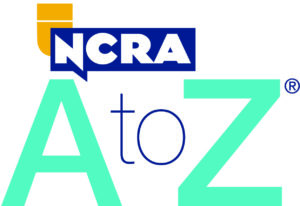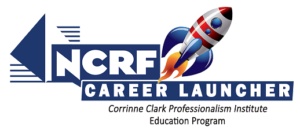By Kay Moody

One of the key elements in developing speed and accuracy in machine shorthand is reading from your shorthand notes. Too often students think it’s unimportant, that it takes too much time, and that it doesn’t benefit them. Reading your shorthand notes is extremely important!
When I was in court reporting school many years ago, I, too, did not know the value of reading and correcting my shorthand notes. In those days, our steno machines produced paper notes in shorthand, and we could pull them up and correct our misstrokes. I’d been in school for three years and hadn’t passed a test in over a year. Unfortunately, I was attending a school that didn’t emphasize readback. We wrote and wrote and wrote on our machines in class. After class, I worked on speedbuilding tapes and wrote and wrote and wrote more on my machine. But it seemed that the more I wrote, the more I practiced, the less I progressed. I felt I was losing, not gaining speed. I was sure I would never get past 140 words a minute; but before giving up, I transferred and commuted more than an hour a day to another school with a fellow court reporting student.
The first day at the new school, the teacher admonished us for reusing our paper and not reading our shorthand notes. During break, we each bought a pad of steno paper, loaded the fresh paper into our machines, and went back to class. Unable to read the steno we had just written, we passed when it was our turn to read. Instead, we diligently corrected our notes when other students in class read back. Later we read our corrected notes to each other on the train ride home. Instead of practicing on my machine, I read my corrected notes two more times at home, and we read them again the next day on the train. After a few weeks of reading and rereading our notes, we both began to pass tests; and within a year, we went from 140 wpm to 225! We both learned the hard way that reading, correcting, and evaluating shorthand notes are essential in developing machine shorthand speed.
Use the following technique when you read your shorthand notes
1. Read the raw steno from your vertical notes, not from the realtime translation screen. Your vertical notes resemble the paper notes we used to use before CAT software. When working on speedbuilding, you should not watch the translation of what you are writing, nor should you watch your computer screen when building speed.
2. Check with your teacher or CAT manual and print out a set of raw vertical steno notes at least once a day so you can read, correct, and evaluate your writing. Use a red pen to correct your notes when reading them. Just reading your notes is fairly effective, but for maximum productivity that programs your subconscious brain, quickly correct a set of paper notes with a red pen. When reading and correcting your shorthand notes, you should have the following objectives:
- Identify your drops. Each time you drop a word, put a slash (/) with the red pen on the paper notes. At the end of the selection, count the slashes and write how many words you dropped. Circle the number of dropped words. Don’t count dropped outlines, but count dropped words. If you dropped a three-word phrase, count that as three dropped words (/ / /). Repeat writing the selection, and force yourself to get more words on each take. In other words, if you dropped 15 words on the first take of a selection, your goal is to get five more words each time you write it until you can write the entire selection without dropping an outline.
- Indicate misstrokes with a red pen. You may put a check (ü) exactly where a misstroke occurred or you may write the correct letter. To save time and quickly correct your notes, write the English letter, not the machine shorthand keys. For example, if you wrote an initial S- when you wanted an initial D-, write D not TK.
- Read your notes out loud whenever possible. A fundamental learning principle is that students learn twice as fast when they hear and see something at the same time; therefore, always try to read your notes out loud. When practicing from recorded dictation, replay the selection and read from your notes along with the tape.
The importance of readback is not just my opinion based on my experience in court reporting school; it is based on many studies of how learning takes place and how psychomotor skills are developed. Reading your notes and correcting them with a red pen conditions or programs your subconscious brain to write the correct shorthand. If you repeatedly make the same correction on a steno outline, you will eventually write the correct outline. It’s based on Pavlov’s theory known as “classical conditioning.” Learned psychologists have applied Pavlov’s theory to developing psychomotor skills in humans. For example, do certain songs remind you of something in your past? Does the scent of a perfume or soap have a pleasant or unpleasant memory? Do you salivate when you smell chocolate or freshly baked bread? If so, these are forms of classical conditioning. Building speed and skill are developed by applying Pavlov’s theory using stimulus and response when you read your steno and repeatedly mark incorrect outlines; and it directly results in developing skill and speed.
Learning is accomplished faster when you employ more than one learning principle. You learn, store, and process information when you see something, when you hear something, when you read something, when you write something, or when you repeat and say something. You learn best when you incorporate many senses together: writing shorthand outlines; reading, visualizing, and correcting steno outlines with your red pen; and hearing them one more time when you read out loud from your shorthand.
In conclusion, reading back and correcting your shorthand notes are probably the most important elements in developing speed and accuracy in writing machine shorthand.
Kay Moody, MCRI, CPE, an instructor at College of Court Reporting in Valparaiso, Ind.










